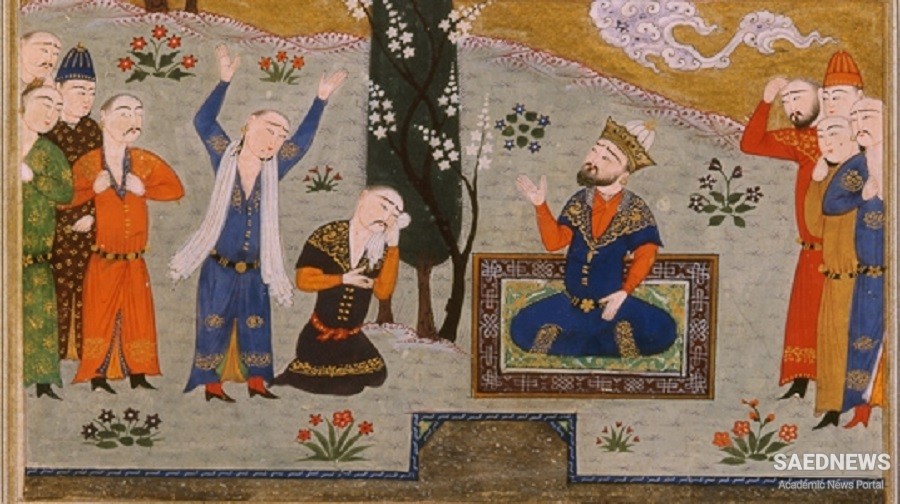Sharvin b. Rustam, the Bavandid ruling at the time of the 'Alids al-Utrush and al-Hasan b. al-Qasim, is last mentioned in events of the year 318/930. His son Shahriyar is first referred to as the ruler of Shahriyarkuh in 331/943, when the Ziyarid Vushmgiir, his brother-in-law, sought refuge with him. In 336/947-8 Shahriyar personally made his submission to the Buyid Rukn al-Daula when the latter conquered Tabaristan. Later he was expelled from Shahriyarkuh by his brother Rustam, perhaps with Buyid support. For in 357/968 Shahriyar is mentioned in Gurgan in the presence of the commander of the Samanid army intending to conquer Tabaristan.
Rustam's rule in Firlm is attested by coins in his name dating from 353/964 to 369/979, on which he regularly acknowledged Buyid overlordship. Inscriptions on these coins also indicate his support of Imaml Shfism. Coins minted in Firim in 371/981 and 374/984-5 name "al-Marzuban b. Sharvin" as the ruler recognizing the suzerainty of the Buyid Fakhr al-Daula. This al-Marzuban is probably to be identified as the son of Rustam and the author of the Mar^ubdn-ndma, a collection of tales about the pre-Islamic Persian kings originally written in the dialect of Tabaristan. Al-Marzuban thus was probably a brother of the famous Sayyida, wife of Fakhr al-Daula, who after her husband's death came to rule in the name of her minor son Majd al-Daula. In 375/985-6, however, an "Ispahbad Sharvan b. Rustam", who is not mentioned in the literary sources, held sway over Firlm according to a coin on which the Buyid suzerainty is not recognized.
He may be either a brother of al-Marzuban or of Shahriyar b. Dara b. Rustam, who according to the numismatic evidence ruled Firlm in 376/986-7 and recognized the overlordship of the Buyid Fakhr al-Daula. Shahriyar evidently was overthrown some time later by his uncle al-Marzuban and allied himself with the Ziyarid Qabus in his exile in Nishapur. For in 388/998 he conquered Shahriyarkuh which according to al-'Utbi, on whose account all later sources depend, was held then by "Rustam b. al-Marzuban, maternal uncle of Majd al-Daula", and proclaimed the suzerainty of Qabus. His rival expelled him with Buyid support, but Shahriyar, aided by Qabus, regained his domains. Soon he claimed independence from the Ziyarid and was attacked and seized by his rival, who had broken with Majd al-Daula and now acknowledged the overlordship of Qabus. It has been pointed out that al-'Utbl seems to have inverted the name of the rival and meant al-Marzuban b. Rustam, the uncle of Shahriyar b. Dara. Al-Marzuban is indeed known to have been Ispahbad of Shahriyarkuh when he was visited by the scholar al-Birunl sometime between 384/994 and 393/1004, most likely about 389/999. It is unknown how long he continued to rule. Shahriyar b. Dara died c. 390/1000 in Ray, perhaps poisoned by the vizier Abu'l-'Abbas al-Dabbi.
The literary sources do not mention the names of any Ispahbads during the following decades. An Ispahbad of Firim is mentioned anonymously, however, as aiding Majd al-Daula and his mother against a rebel in 407/1016-17. An Ispahbad of Tabaristan in 418/1027 was captured in a war with the Kakuyid 'Ala' al-Daula, in whose prison he died in 419/1028. Almost certainly the first one, and perhaps also the second one, is to be identified with the Bavandid Ispahbad Abu Ja'far Muhammad b. Vandarin, who according to an inscriptionin407/1 o 16-17 ordered the building of a mausoleum, known as Mll-i Radkan in the upper valley of the Nika river southwest of Astarabad and was evidently still alive at the time of its completion in 411/1020. These data, however fragmentary, tend to invalidate the general assumption of modern scholars that the reign of the dynasty lapsed in this period until its new rise in the early Saljuq age.


 Justin II and His Conflict with Persians
Justin II and His Conflict with Persians














































